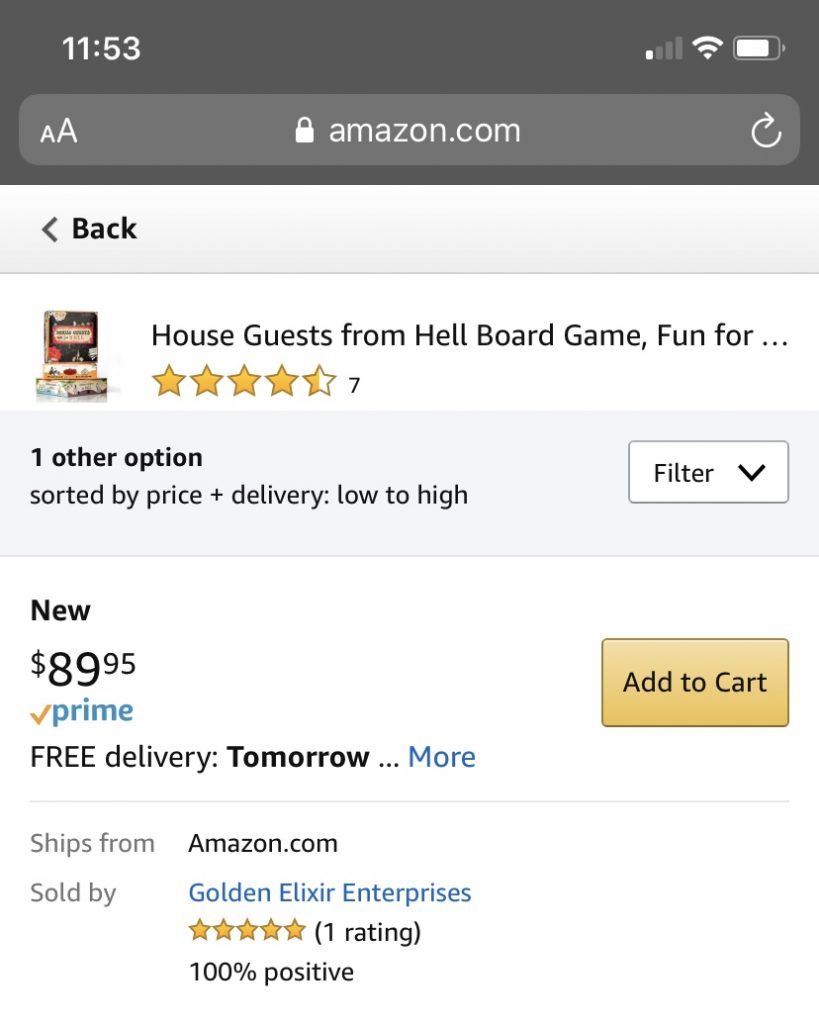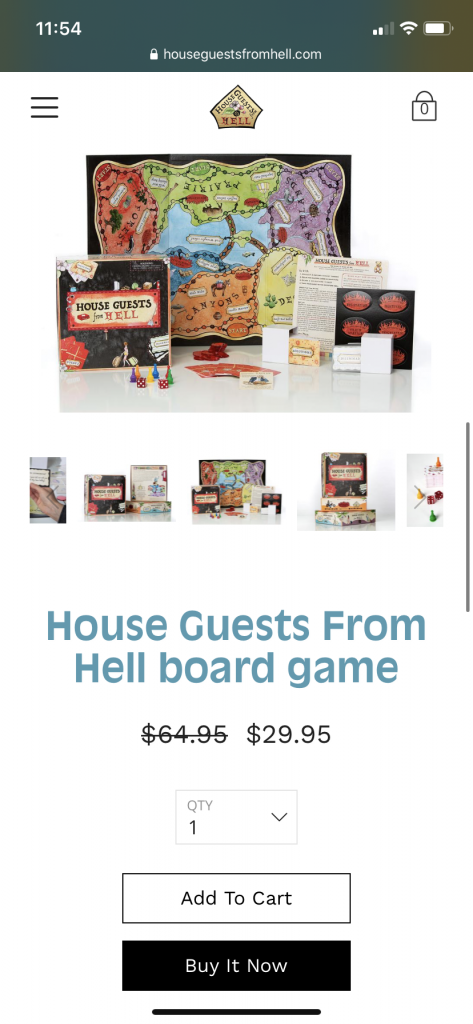Most of us have been there…reluctantly agreeing to house a family member or friend for a certain period of time and it turning out to be more than we bargained for. My ex’s cousin, who shall remain nameless, took hour long showers and was quite the drama queen. He then had the nerve to tell me that I was selfish for kicking him out even though I was supporting him while he went to school. *Shrug*
”House Guests from Hell” puts players in a similar predicament. The first player to offload their house guest wins the game. To do that they’ll need to solve varying dilemmas by using a bit of story telling. Before we get any further I’m required by FTC regulations to divulge that I was paid to cover this game. Any and all opinions however are my own.
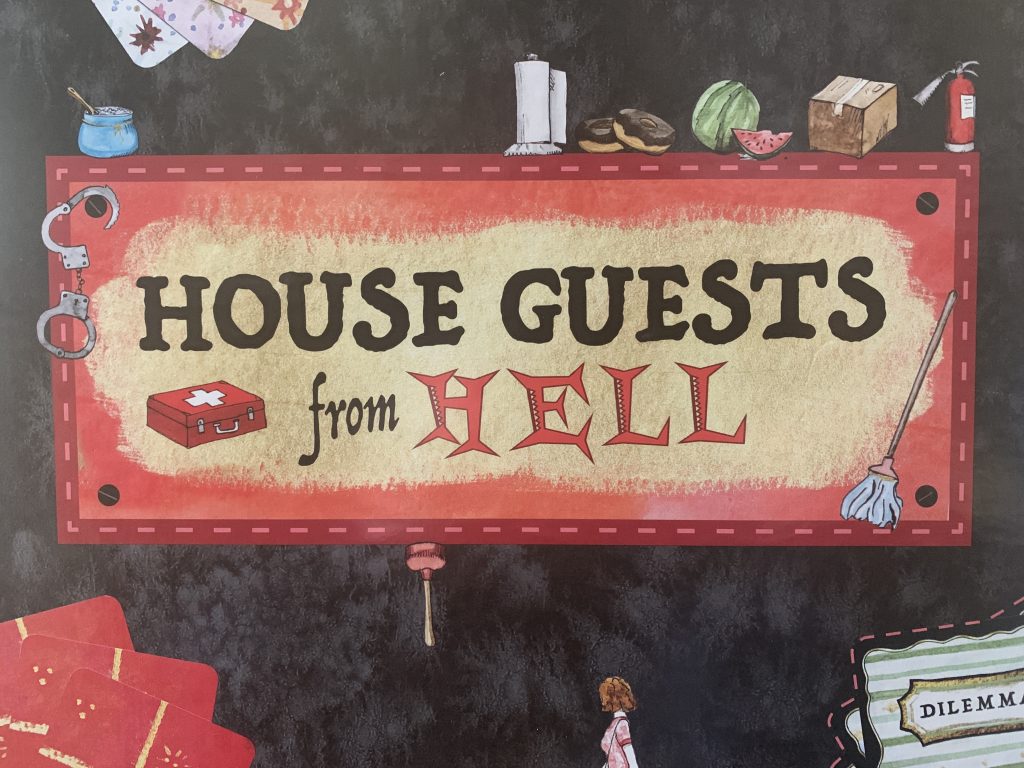
The game comes with a playing board, 30 house guest cards, 80 dilemma cards, 160 solution cards, 18 entertainment tokens, 6 player pawns, a drawstring bag with 6 brimstone tickets, 2 dice, and card boxes.
To set up the game, each player gets a pawn, matching the color of the board to which they are closest. The pawn goes on the start space. The brimstone tickets are placed in the bag. The decks are shuffled separately with each player getting one house guest card, two dilemma cards, and two solution cards. All cards are kept face up for all to see. Highest dice roll goes first with turns proceeding clockwise.
The object of the game is to visit all three locations listed on your guest card, then proceed to the guest’s brimstone location which you’ll draw once you’ve visited the three locations. Players will track how many locations they’ve visited by taking an entertainment token when they arrive at one they need. If a player reaches their brimstone location AND has solved all of their dilemmas then they win!
At the beginning of every player’s turn they’ll draw one dilemma and two solution cards. They’ll then match one solution to a dilemma and try to come up with a story in which the solution item solves the dilemma. The other players will vote as to the plausibility of the story. If successful, the active player discards both the solution and dilemma card. Successful or not, the active player rolls the dice and moves their pawn forward toward one of their destinations.
Turns will continue until one player reaches the goal mentioned above. To shorten the game, players can opt to only need two of the three locations listed on their guest card before attempting to reach their brimstone destination. Players can also make the game harder by drawing only one solution per turn instead of two.
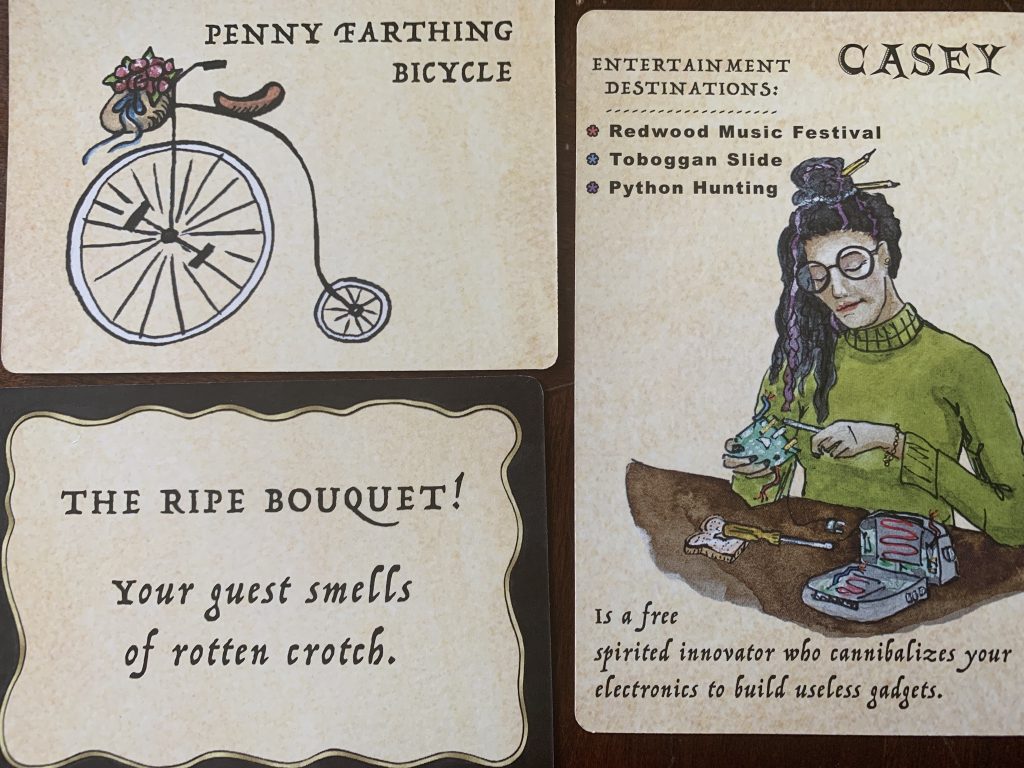
Gold spiral spaces allow the active player to steal a solution card from another player and draw one from the deck. Black spiral spaces makes the active player discard their guest and draw a new one. If a player already had entertainment tokens then all they need to do is make up the remaining tokens by visiting any of the three new ones listed.
The above doesn’t cover all of the rules listed in the manual, but should give you an idea as to how the game is played.
”House Guests from HELL”, in my opinion, falls under the social gaming category. Most social games like “Apples to Apples” are meant to be silly and promote social interaction in some way. This one focuses on story telling and a bit of car salesmanship. I mean, getting the group to accept that you use a boom box to fix a broken kitchen faucet will take a bit of work. Those with a slippery tongue will do well here. Some solution cards are a bit more broad, helping players to solve the trickier dilemmas in front of them. The maid bonus card could be used to address any dilemmas involving a mess for example.
The quality of the components are borderline acceptable. The brimstone tokens, for example, are made up of the flimsiest paper/cardboard I’ve seen. The board felt light and the pieces in general basic. The dice were big though, which is a plus. Comparing the quality of “Wingspan” to a game like this would be criminal. It’s also worth mentioning that some cards feature semi-inappropriate art. One of the house guests can clearly be seen mooning, for example. Parental guidance is suggested…the 14+ age suggestion on the box is thus fairly accurate. The game itself supports 2-6 players and take about 1-2 hours to play on average.
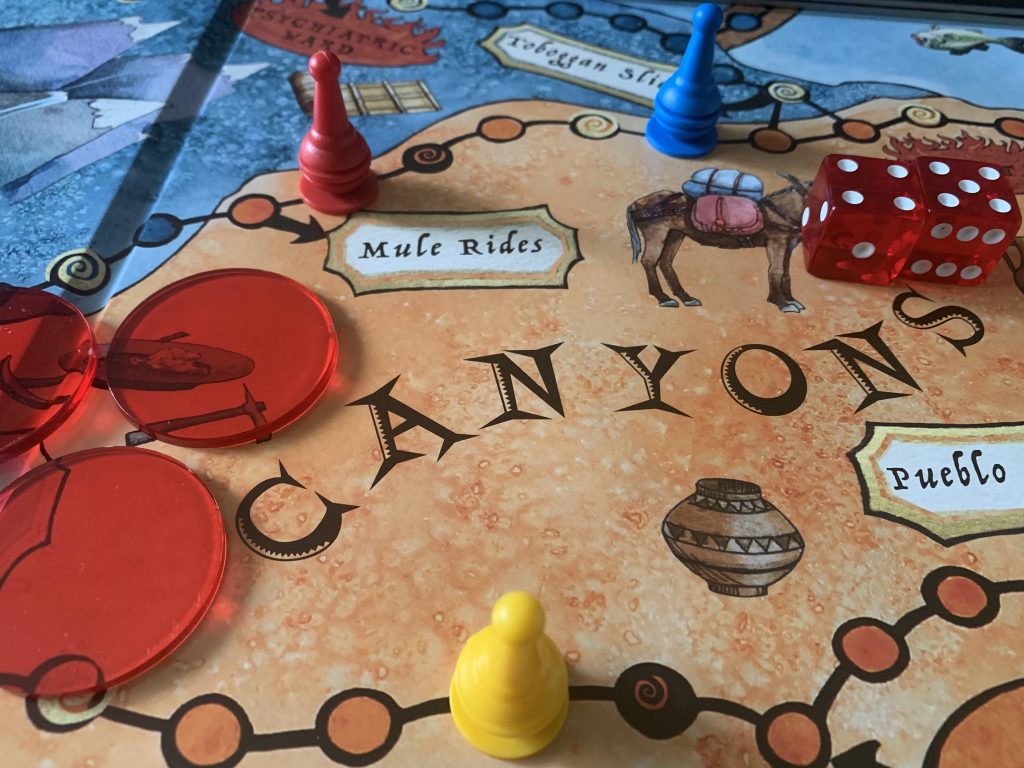
Golden Elixir Enterprises, the company listed on the box, has the game listed on Amazon for nearly $90. I’ve only seen a few games retail for that high, “Defense Grid” being one of them, and it’s usually because the game contains high quality miniatures or components. In this case, the components are “meh” at best and nothing here warrants a $90 price tag. Curiously, their official website lists the game at $29.95 down from $64.95. It’s clear to me that this is the first game that this company has ever released. Not only is the price too high, but it’s not consistent. This is a $15-20 game at best, even if production costs were higher than that. There’s just too many better games out there that one could pick over this.
Price aside, the game isn’t bad per say, but it’s not good either. It’s a basic, run of the mill casual/social game, nothing more. It didn’t wow me in any particular way, even though the potential for funny story telling is there. The latter will depend on the sense of humor of your group. I think this game needed a bit more to impress a seasoned gamer like myself, though it may be enough for the casual gamer family (teens and adults only).
Some of the art is charming however and I appreciate what the game attempts to do. At a lower price point I think that this game could stand a decent chance on the retail shelves. What makes it difficult to recommend however is how flooded the market already is with social interaction games. Games like “Apples to Apples” and “Say Anything” are fairly cheap to buy and have good component quality. Still, if you’re out of social interaction games to play and price doesn’t matter to you then by all means, I won’t stop you from picking it up.
Long story short: Average game with a high and inconsistent price tag.
Final Verdict: 4/10 (Below Average)
